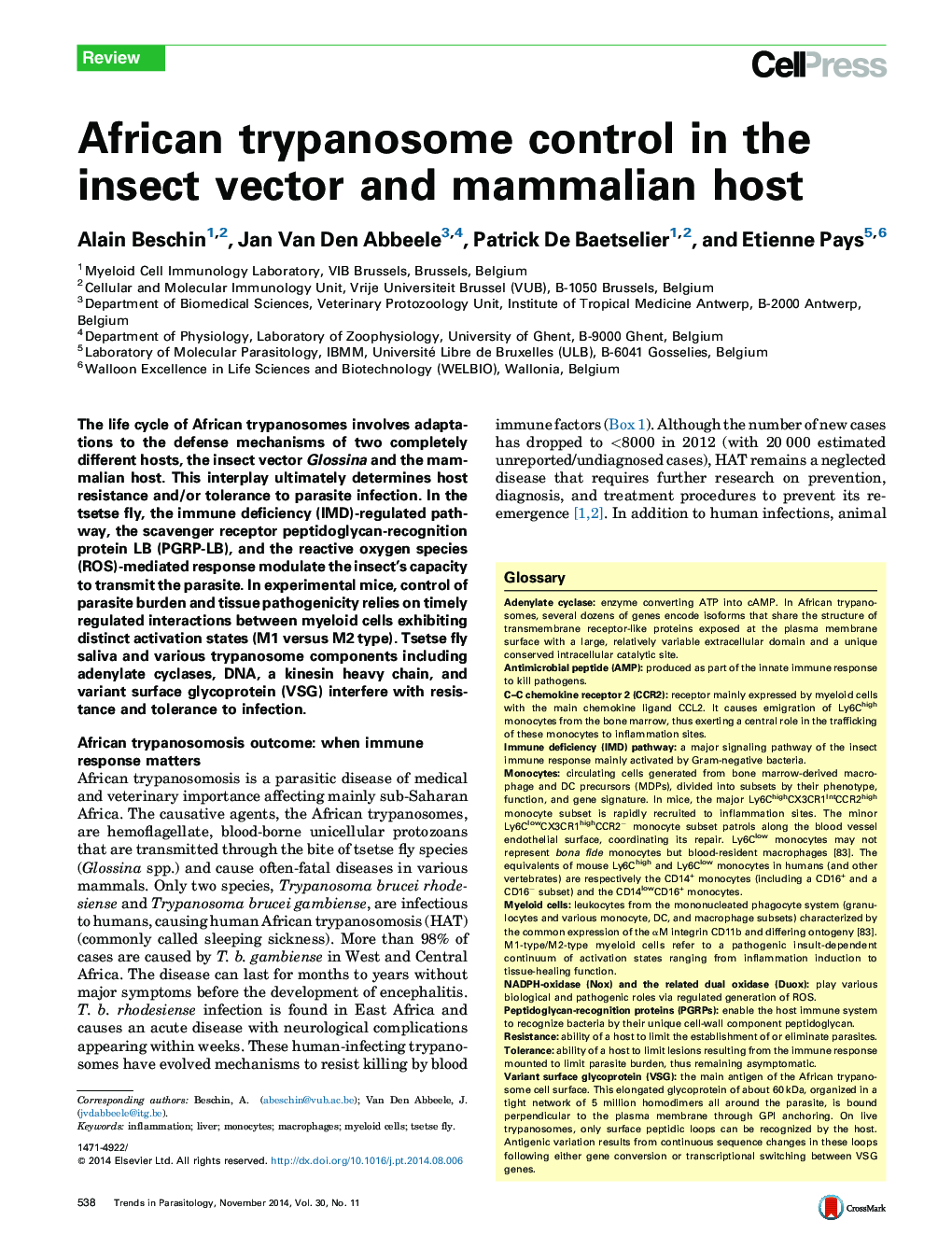| Article ID | Journal | Published Year | Pages | File Type |
|---|---|---|---|---|
| 3423036 | Trends in Parasitology | 2014 | 10 Pages |
•In the insect vector, various pathways converge to limit trypanosome infection.•In mammals, parasite load is not a major contributor to tissue pathogenicity.•Distinct myeloid cell subsets grant tissue-protective and -destructive immune responses.
The life cycle of African trypanosomes involves adaptations to the defense mechanisms of two completely different hosts, the insect vector Glossina and the mammalian host. This interplay ultimately determines host resistance and/or tolerance to parasite infection. In the tsetse fly, the immune deficiency (IMD)-regulated pathway, the scavenger receptor peptidoglycan-recognition protein LB (PGRP-LB), and the reactive oxygen species (ROS)-mediated response modulate the insect's capacity to transmit the parasite. In experimental mice, control of parasite burden and tissue pathogenicity relies on timely regulated interactions between myeloid cells exhibiting distinct activation states (M1 versus M2 type). Tsetse fly saliva and various trypanosome components including adenylate cyclases, DNA, a kinesin heavy chain, and variant surface glycoprotein (VSG) interfere with resistance and tolerance to infection.
